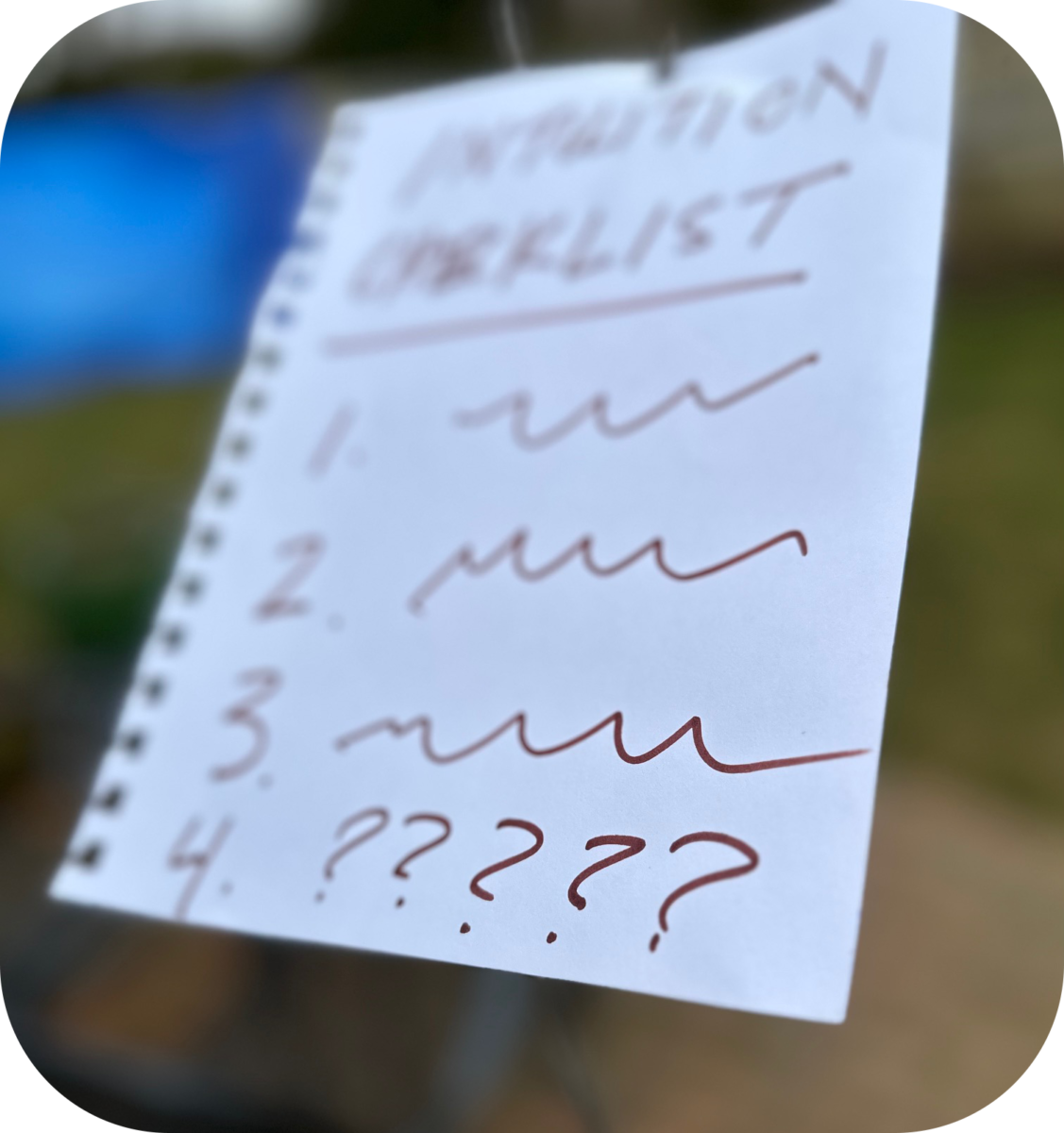
Even though “Trust your intuition,” is a frequently used phrase, intuition can feel incomprehensible, or inaccessible.
It’s easy to think, “What—and where—is my intuition? And why should I trust it?”
It’s possible this insecurity about/suspicion of intuition comes from a misperception:
We think intuition is esoteric; something that can only be accessed during a full moon, after we’ve turned counterclockwise, rubbed two sticks together, and spit.
Or some such.
But what if intuition could be summoned by something as seemingly prosaic as a checklist?
You read that correctly: a checklist.
What kind of checklist am I recommending?
Well, the world of checklists includes 2 basic kinds:
- Read: Do
- Do: Confirm
Read: Do is like a recipe: you read it, you do it.
Do: Confirm is used by pilots, doctors, and engineers (among others) and it’s the one we are interested in today.
Why?
Because when you take the time to do, and then confirm—in a super-prosaic, step-by-step way—whether the many elements of a familiar but complex task have actually been completed, space in your brain is freed up to notice when something is irregular, or out of place, or “off.”
You give your intuition the opportunity to flex.
So, if you feel like something is off, but you can’t articulate why, first check(list) in.
And if something still seems amiss?
Trust your intuition.
For more on the value of checklists—and how to use them—here’s a summary of Atul Gawande’s “The Checklist Manifesto”
What other factors can help you trust your intuition? Check out “Visual, Aural, or Kinesthetic? How Knowing Someone’s Primary Intake Pathway—and Your Own—Can Save You from Miscommunication”
